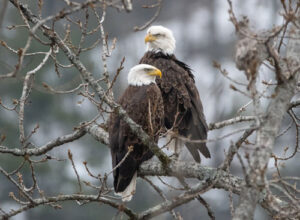(by Paul Nickerson)
The framers of the federal Endangered Species Act (ESA) of 1973 realized early on that successfully identifying species in need of listing, and recovering those already listed, would depend upon cooperation between the federal government and the states. Each state is different, though. Here in New Hampshire it took several years of hard work to get an agreement in place to enable the state to receive federal funds to do endangered species work.

In order to receive federal grants under the ESA, each state had to pass legislation to give their state fish and wildlife agency the authority to manage threatened and endangered species. States with that authority plus a signed agreement with US Fish and Wildlife Service (FWS) could then receive federal funding to cover up to 75% of approved project costs for work with threatened and endangered species.
New Hampshire qualified for this federal funding by passing the state’s Endangered Species Conservation Act in 1979. Initially some New Hampshire legislators had concerns about federal involvement in the state’s management of wildlife. I worked for FWS at the time, and the legislature called me in to testify as the Regional Chief of Endangered Species. Questions were tough and there was initially some reluctance from the legislature to proceed. Fortunately, two well respected staff members of the Fish and Game Department, Warden Jim Jones and biologist Harold “Flip” Nevers, convinced both the legislature and upper management at Fish and Game of the value of state/federal cooperation. These men are both gone now but have left a lasting conservation legacy. The legislation eventually passed and Fish and Game and FWS signed a cooperative agreement.
Actual work to recover endangered species got off to a slow start in New Hampshire. Fish and Game was forbidden from using money from hunting and fishing licenses to match federal funds for work on threatened and endangered species. As a result, NH Audubon entered into a cooperative agreement with NH Fish and Game to create the NH Endangered Species Program, raised the necessary matching funds from grants and private donations, and organized field work on listed species, particularly Bald Eagles, Peregrine Falcons, and terns. Today Fish and Game has several wildlife biologists working with a number of nongame species in need of help, but Bald Eagles and Peregrines are still under Audubon’s purview. Though some things have changed, to this day the three-way partnership among FWS, NH Fish and Game, and NH Audubon is still working well.
Prior to joining NH Audubon’s Board of Trustees, Paul Nickerson had a long career with the Northeast Region of the US Fish and Wildlife Service, including serving as the leader of Endangered Species recovery planning for the Northeast Region.
*This article is part of a monthly series celebrating the 50th Anniversary of the Endangered Species Act.
